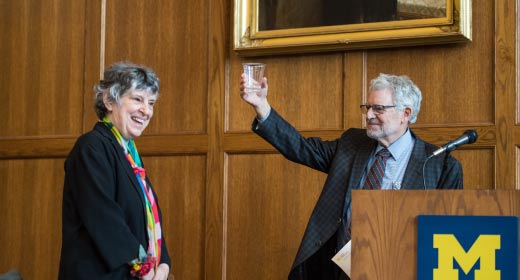
The gender pay gap is notoriously alive and well, decades after women entered the workforce in large numbers. Mary Corcoran and Paul Courant explored this issue together many times over the years.
In one important study, published in 1993, the two, with co-author Robert G. Wood, used data from University of Michigan Law School graduates to explore earnings fifteen years after graduation. Their model was clever: it ensured that the men and women in the sample had identical training and education.
They found that a year after graduation, pay for the women was 93 percent of that for their male counterparts. By year fifteen, the gap had ballooned: women earned just 61 percent of what men were paid.
But why? The study broke new ground on answering that question because the researchers built a model that accounted for work histories and other theoretically important determinants of women’s wages. Sure enough, their findings linked some of the wage gap to those variables, such as women’s greater role in childcare, switching jobs more frequently, and having practiced law for fewer years.
Having empirically accounted for those factors, the authors could be more certain that any gap remaining was likely due to employer discrimination. Since that first study was published, many others have used this same approach, applying the model to other professional fields and more effectively identifying gender discrimination in the labor market.
» Read “Pay Differences among the Highly Paid: The Male-Female Earnings Gap in Lawyers’ Salaries” in the Journal of Labor Economics, Vol. 11, No. 3 originally published in July 1993.
Below is a printed version of this edition of State & Hill, the magazine of the Ford School. View previous editions.
